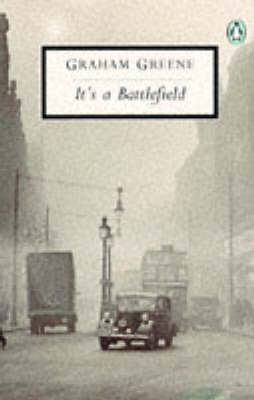Reviewed by brokentune on
“ ‘Yes,’ the secretary said, ‘it was about Drover. Now that the appeal has failed, it all rests on the Home Secretary. The poor dear man is worried, very worried, and all on top too of the licensing.’ The secretary’s wide pale face glistened softly under the concealed lighting and he leant forward with an infinite suggestion of frankness, with an overwhelming effect of guile. ‘To tell you the truth, he’d have been glad, he’d have been tremendously relieved, if the appeal had been allowed.’ ‘Impossible,’ the Assistant Commissioner said, ‘there was no possible – er – line possible – er – line that the Defence could – could take.’ ‘Exactly. I was in Court. The Minister, you see, thought that the L.C.J. might give some excuse for a reprieve. But there was nothing at all to get hold of.’ ‘The policeman died,’ the Assistant Commissioner said stubbornly, ‘we got the man.’ ‘But the Minister, you know, doesn’t want the poor devil’s blood. Nobody does. It was a political meeting. Everyone was excited. Drover thought the bobby was going to hit his wife. He had the knife in his pocket. That, of course, is the snag. Why did he carry the knife?’”
Well, that was ... interesting. It’s a Battlefield seems to follow on – in both content and style – from The Man Within and tries to show the discrepancy between what is just in humanitarian terms and what is just in social or legal terms.
The story focuses on the efforts of the Assistant Commissioner to write a report and make a recommendation to the Home Secretary about whether the death sentence handed to Drover should be reprieved. Drover had been convicted of the killing of a police officer during a demonstration. In the course of the investigation by the Assistant Commissioner, it becomes clear that there is a little more to the background of the conviction and that the sentencing may have been influenced by the fact that Drover’s is a communist.
It’s an interesting book because Greene quite overtly talks about politics and social injustice in Britain (the story is set in London). Written in 1934, around the time that Greene joined the Independent Labour Party, the book seems to reflect on issues that Greene might have pondered on as part of his political activity. However, as with everything with Greene, there is little confirmation of what his motivations were as he constantly revised his memoirs, creating quite a few contradictions.
Nevertheless in true Greene fashion, despite the politically inspired theme there is no clear message to the story other than a realisation that life can be depressing, futile, and unjust.
“When he thought of the heavy sentences passed on men who stole a little jewelry from a rich man’s house, the Assistant Commissioner was more than ever thankful that justice was not his business. He knew quite well the cause of the discrepancy; the laws were made by property owners in defence of property; that was why a Fascist could talk treason without prosecution; that was why a man who defrauded the State in defence of his private wealth did not even lose the money he had gained; that was why the burglar went to gaol for five years; that was why Drover could not so easily be reprieved – he was a Communist. Again, it was not his business; he resented having to report to the Minister that in his opinion neither the reprieve nor the execution of Drover would have any public effect.”
This is still an early work and, as mentioned above, it is very reminiscent of The Man Within and I would not be surprised if he had written or drafted It's a Battlefield before Stamboul Train, just because the characters seemed to be developed better (and applied a dark sense of humour) in Stamboul Train. I don't think Greene had found his proper style yet but am curious to discover at what point in time he breaks away from trying to have his protagonists act out social or political struggles and starts to focus on the internal turmoils.
Reading updates
- Started reading
- 11 July, 2014: Finished reading
- 11 July, 2014: Reviewed
